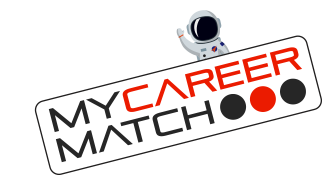You’ve found the perfect job, your resume and references are all lined up and ready to go, and now there’s just one thing standing between you and hitting “send” on the application: the dreaded cover letter!
So, what does a great cover letter do?
- Introduces you to an employer
- So impresses the employer that they want to meet you
- Promotes your key selling points (skills, abilities, achievements)
- Is specifically tailored to each job you are applying for
- Shows the employer how you match their requirements
- Finishes with a ‘call to action’ e.g. requesting an interview or meeting
Very few people actually enjoy writing cover letters. Even if you know the basics (one page, 4-6 paragraphs), it can be tough to dissect what, exactly, an employer is looking for and how to translate that into a few hundred words.
Follow these 5 steps and make your next cover letter a killer!
1. BE ALL ABOUT ‘THEM’
Although you certainly want to explain why you’re interested in a position, it’s best to spend the majority of your letter describing how you will be an asset to the company. Even when you talk about why you’re pursuing the job, word it in a way that highlights your passion for what the organisation does and why you want to work there.
2. BE A COPYCAT
Here’s the secret: when employers create a job description and advertise the job, it’s essentially a checklist of the things they’re looking for in an employee.
In order to make it easy for an employer to see that you have what they’re looking for, mimic the job description—not word for word, of course, but by finding the things that the company is looking for and highlighting specific examples of how you have them. This will help you focus on credentials that are really important—and help the employer focus on why you’re the perfect match for the job.
3. BE STRENGTHS AND SKILLS-FOCUSED
Turn your letter into an opportunity to highlight 3-4 of your strengths and abilities that are relevant to the job. Structure each paragraph around one of the skills you’ve chosen to highlight, then write 2-3 sentences about that skill (or strength).
4. BE YOURSELF
When you’re writing your cover letter, remember that the hiring manager is likely going to be reading a lot of them (and she probably doesn’t really enjoy reading them much more than you like writing them). So, while you want to make the letter professional, you also want to put some of your own personality in it.
You shouldn’t ever step over the line of professionalism, but crafting an engaging letter with some color will catch people’s eyes and make them think, “wow, this would be a fun person to work with.” And that might be just enough to set you apart from all the other qualified applicants out there.
5. FOLLOW THE BASIC FORMAT OF A TYPICAL BUSINESS LETTER
Address your cover letter properly. Find out the name and position of the person to send it to. Make it formal but positive. This is a business letter. Observe business letter writing conventions – left hand justified, clear, concise, grammatically correct, readable – and of course, NO spelling mistakes!
A. First Paragraph: Your Introduction
Open with a catchy heading and first paragraph. Use a large font or make it bold. It’s a promotional letter so you must grab the reader’s interest right away. The opening paragraph should stand out... like a well written story, it grabs your attention so you want to read more.
Indicate which job you are applying for and where you learned of the position and the exact title of the position you are applying for. More importantly, remember to convey your enthusiasm for the job and the likely match between your skills and the position's required qualifications. Tailor each cover letter to the specific job application. Demonstrate you understand the job requirements, you have matching skills and abilities and you are genuinely interested and enthusiastic about this specific opportunity.
B. Middle Paragraphs: Your Sales Presentation
Every potential employer expects to hear about your skills and achievements, but presenting the ones that best represent your relevant experience or transferable skills is critical. Make a list of key talents and achievements and only use the ones that relate best to the selection criteria and prove your abilities.
Don't be afraid to highlight certain relevant points in bold, italics or even set out your strengths and examples against the job description in bullet points - this makes the information very easy to process when scanning the cover letter.
Use key words. Through careful reading of the job ad, company website or industry information you’ll be able to identify the key words relevant to the job or industry, and include these in your cover letter. This encourages the reader to take a closer look at your resume.
C. Closing Paragraphs: Call to action/Ask for the interview
End with a ‘close’. Sales people use this technique all the time. Tell them you are confident you can do a great job; that they won’t regret hiring you, and you look forward to the interview.
Include a PS (postscript). Everyone reads a PS so use this to re-state your interest and enthusiasm.
“If you want to stand out from the crowd, give people a reason not to forget you”.
Richard Branson
DOWNLOAD

